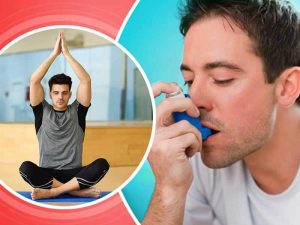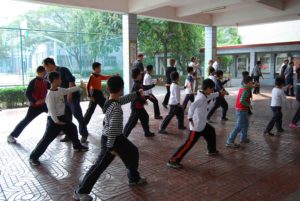Improve Asthma Symptoms with Mindfulness
By John M. de Castro, Ph.D.
“Asthma is treatable and well can be controlled.” —Cathy Freeman
Asthma is a chronic disease of the lungs that involves a persistent inflammation of the airways. When the inflammation worsens, it makes it more difficult for air to move in and out of the lungs provoking coughing, wheezing, shortness of breath and chest tightness. It is estimated that 300 million people worldwide and 30 million people in the U.S. suffer from asthma and the incidence appears to be growing. Asthma is not fatal and those with moderate asthma have an equivalent life expectancy to those that don’t. There is no cure for asthma. So, it is a chronic disease that must be coped with throughout the lifetime. Treatments are aimed at symptomatic relief. Most frequently drugs, anti-inflammatory hormones, and inhalers are used to help control the inflammation. Mindfulness training has been shown to improve the symptoms of Asthma.
In today’s Research News article “Clinically relevant effects of Mindfulness-Based Stress Reduction in individuals with asthma.” (See summary below or view the full text of the study at: https://www.ncbi.nlm.nih.gov/pmc/articles/PMC9513112/ ) Higgins and colleagues recruited asthma patients and randomly assigned them to either a wait-list control condition or to receive an 8-weekly 2.5 hour sessions of Mindfulness-Based Stress Reduction (MBSR) consisting of meditation, yoga, body scan, and group discussion. The participants were measured before, midpoint, after and every month for 6 months for asthma control, asthma severity, airway inflammation, anxiety, depression, perceived stress, symptoms and severity, and mindfulness.
They found that in comparison to baseline and the control group, the MBSR had significantly improved mindfulness and asthma control and significantly reduced symptom distress and airway inflammation. Hence, MBSR produced significant improvements in asthma symptoms and the patients ability to control the symptoms.
So, improve asthma with mindfulness.
“Asthma would not keep me from enjoying life.I beat asthma everyday.” —Unknown
CMCS – Center for Mindfulness and Contemplative Studies
This and other Contemplative Studies posts are also available on Twitter @MindfulResearch
Study Summary
Higgins ET, Davidson RJ, Busse WW, Klaus DR, Bednarek GT, Goldman RI, Sachs J, Rosenkranz MA. Clinically relevant effects of Mindfulness-Based Stress Reduction in individuals with asthma. Brain Behav Immun Health. 2022 Sep 14;25:100509. doi: 10.1016/j.bbih.2022.100509. PMID: 36177306; PMCID: PMC9513112.
Abstract
Background
Psychological distress and comorbid psychopathology contribute to exacerbation risk in patients with asthma. Thus, interventions designed to reduce stress and improve emotion regulation, such as Mindfulness-Based Stress Reduction (MBSR), may augment standard care. Few studies have addressed this question and a paucity of data exists to determine the ability of MBSR to impact clinical outcomes in asthma.
Methods
This randomized controlled trial investigated effects of MBSR training on asthma control and airway inflammation, in relation to psychological symptoms, in adults with asthma. Participants were randomized to an 8-week MBSR training (n = 35) or wait-list control group (n = 34). Clinically relevant asthma assessments, including Asthma Control Questionnaire and inflammatory biomarkers, were collected at baseline and six approximately-monthly follow-ups. Self-reported mindfulness, distress, depression, and anxiety symptoms were assessed at baseline, post-intervention, and study completion. Chronic stress level was determined at baseline only.
Results
Asthma control improved significantly in individuals randomized to MBSR, relative to wait-list controls (p = .01; effect size d = 0.76), which was maintained at 4mo post-intervention. 32% of MBSR participants achieved a clinically significant improvement, based on the ACQ6 Minimally Important Difference, relative to 12% of wait-list participants. Moreover, MBSR-related improvement in asthma control was associated with a reduction in distress (p = .043) and the intervention was most efficacious for those with the highest baseline depressive symptoms (p = .023). Importantly, MBSR also reduced levels of exhaled nitric oxide, a biomarker of airway inflammation, relative to wait-list controls (p < .05).
Conclusion
Supporting and extending extant evidence of mind-body relationships in asthma and the benefits of stress reduction for these patients, this is, to the best of our knowledge, the first RCT to demonstrate that training in MBSR improves clinically relevant asthma outcomes. MBSR may thus be a valuable addition to optimal asthma management, particularly for those with comorbid psychopathology.



